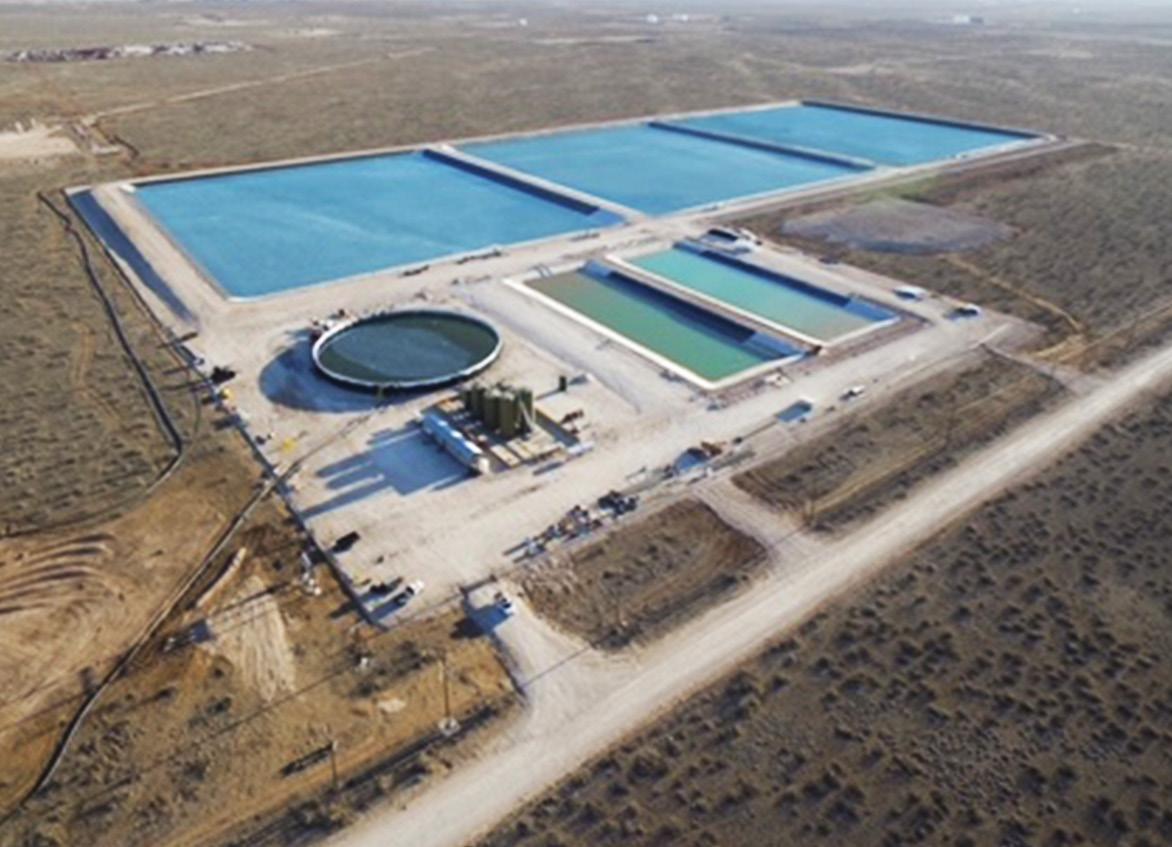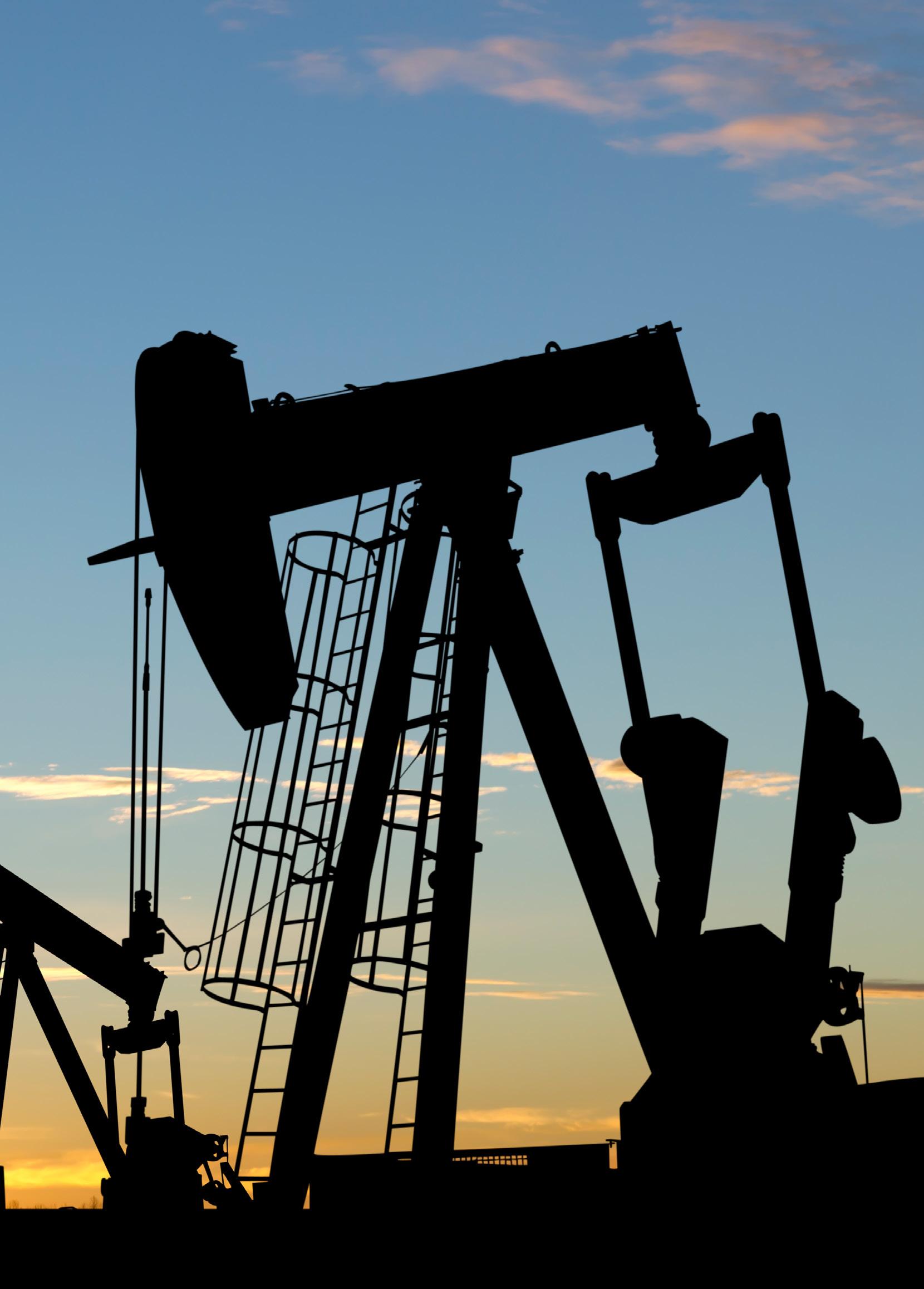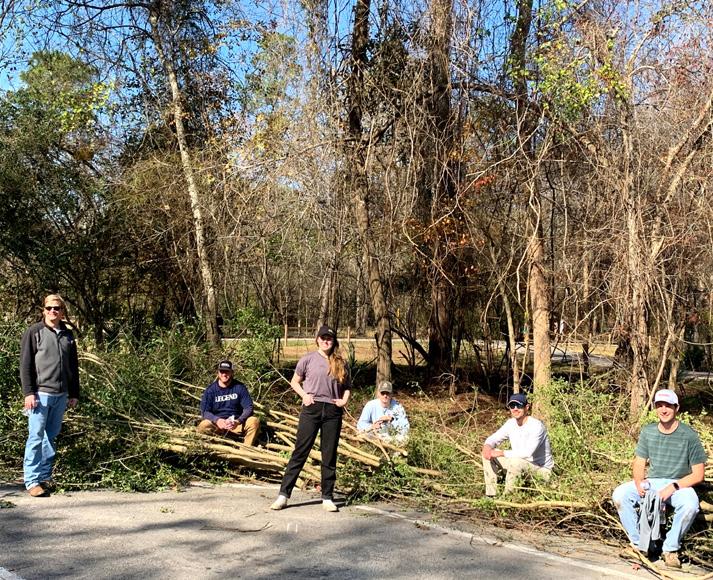
2020 SUSTAINABILITY REPORT






TRP Energy is proud to issue our inaugural sustainability report and share our efforts as a private, upstream operator transitioning alongside a decarbonizing world. This report comes at a time when the COVID-19 pandemic has disrupted every industry and emphasized employee safety and adaptation.
We pride ourselves as an open-minded, forward-thinking team that can quickly adapt to markets. Our nimbleness is largely the reason we were able to have a successful year financially. Though commodity prices were suppressed, we optimized our existing producing asset base and improved margins. These efforts generated significant free-cash-flow and improved our balance sheet.
We also used 2020 to reflect on our purpose as an energy producer in a decarbonizing world. Emissions are affecting the climate, but access to affordable high energy density oil and natural gas drives GDP in developed nations and is a matter of public health in the emerging world. Therefore, we need to be part of the solution by greening our own oilfield and producing hydrocarbons with a lower carbon intensity. In short, we can be both a steward of the environment and a producer of vital oil and natural gas that power our communities.
In that spirit, we started an Environmental Advisory Board (“EAB”) to engage with thought leaders spanning academia and NGOs similarly motivated to lower the full-cycle environmental impact of the oil and gas industry. This first of its kind formal collaboration with environmental stakeholders will create a transparent forum where ideas can be exchanged around the latest technology and best-in-class operational processes to foster a reimagination of the modern oilfield. The EAB initiative will be a continuation of our greening-the-oilfield efforts in 2020.
We started by lowering our controlled emissions on our operated assets in Texas and Oklahoma. We conducted a novel pilot program to study methane emissions by utilizing the latest in methane detection technology. This study led to a collaborative effort with the Environmental Defense Fund to publish and share best leak detection and repair practices.
Additionally, we were honored to be invited to join Project Falcon, a joint industry collaboration to study 24/7 methane monitoring in the oilfield alongside ExxonMobil, ConocoPhillips, Shell, Chevron, Devon Energy and Pioneer Natural Resources.



Randy Dolan Trent Foltz
Co-founder and Co-CEO
Co-founder and Co-CEO
Our culture is driven by integrity, creativity, and accountability. As we continue to grow, our success lies in the trust of all our stakeholders—our employees, our investors, our partners, and the communities we touch. We look forward to meeting the ambitious environmental goals we have set for ourselves as we continue to march towards a sustainable future.
Our overarching mission is to lead by example and be the standard of an environmentally conscious, private operator.
Randy Dolan
Trent Foltz
Co-founder and Co-CEO Co-founder and Co-CEO
With offices in Houston and Denver, TRP Energy is a private oil and gas company focused on investing in upstream assets across premier onshore U.S. basins that offer attractive risk-adjusted returns. Our current portfolio consists of highly economic, operated, oily inventory with development optionality across the Midland Basin and Anadarko Basin.
• 130 operated wells across Texas and Oklahoma
• Operations are primarily in Upton County, Texas
• 9,800 boe/d gross operated production (Q1 2022E)
• Equity capital partnership with Trilantic Capital Partners
As a responsible operator committed to excellence in all aspects of our business, we are dedicated to advancing environmental initiatives that will lead to a greener oil and gas industry. We work hard to minimize our impact to the environment by adopting best practices that exceed regulatory requirements. Our robust environmental, health and safety (EHS) strategy includes mitigating risks, increasing employee knowledge and skills, improving processes, and measuring performance to ensure the protection of our employees, the environment, and the public. We look for opportunities to minimize energy consumption, recycle water, and reduce our greenhouse gas (GHG) emissions. We also work closely with regulatory agencies to comply with all environmental requirements as well as partner with industry leaders to develop and implement programs that allow us to continue to provide affordable energy that improves the quality of life in both emerging and developed economies.


1
2020 KEY STATISTICS
ENVIRONMENTAL
Scope 1 GHG Intensity 9.8 mt CO2e/mboe
Scope 1+2 GHG Intensity
• 100% carbon neutral covering Scope 1 and 2 GHG emissions
• Implemented rigorous methane detection program that greatly exceeds regulatory requirements
• Rolled out remote monitoring program on key pieces of emission reduction equipment
• Zero diesel-fired generators used in production operations
• Zero high-bleed or intermittent-bleed pneumatics
• Zero routine high-pressure flaring 2
2 Low-pressure flaring is utilized for safety purposes. High-pressure gases are defined as hydrocarbons that exist in the gaseous phase at pressures above the prevailing midstream line pressure. High-pressure gases are only flared during infrequent, emergency situations.
TRP Energy’s Environmental Advisory Board will be a first of its kind formal collaboration between an environmentally conscientious oil and gas company and thought leaders spanning academia and non-profits similarly motivated to lower the full-cycle environmental impact of the oil and gas industry. The EAB will consist of experts in greenhouse gases, certified gas, carbon capture and storage, land reclamation, responsible water use and hydrogen with the goal of fostering the latest ideas, research, and best-in-class environmental processes. TRP is committed to sharing its sustainability activities to reduce its environmental footprint, including air, water and land while the EAB will foster collaboration and engagement between industry and like-minded environmental advocates.
STEVE CONLEY
CEO Scientific Aviation

Dr. Steve Conley founded Scientific Aviation in 2010 and developed all of the software currently in use on the aircraft, UAVs and SOOFIE systems. He has a PhD in atmospheric science from the University of California and has been developing software for 40 years. He is an instrument rated commercial pilot and served as an officer in the United States Navy during operation Desert Storm.

ERIN TULLOS
Senior Director for Gas Transition Solutions at the Gas Technology Institute

Dr. Erin Tullos is the Senior Director for Gas Transition Solutions at the Gas Technology Institute, focusing on leveraging gases, fuels, and infrastructure in the global transitions to low-cost, low-carbon energy systems, with special attention to methane emissions mitigation at scale. She is also a Visiting Research Fellow at the University of Texas at Austin, researching methane emissions and mitigation.
“We believe stakeholder engagement and open collaboration with environmental advocates will bring perspective and effective solutions as we lead the transition to a greener, modern oilfield…the Environmental Advisor Board will be a differentiating force for TRP.”
LARA OWENS
Project Manager, RMI

Lara Owens is a manager in RMI’s Climate Intelligence program, focusing on accelerating efforts to reduce greenhouse gas emissions from global oil and gas supply chains. Prior to joining RMI, she worked at Mercury NZ and Ormat Technologies Inc as a technical expert, managing exploration and development, process chemistry, operational efficiency and environmental compliance.
MARK SHUSTER
Associate Director at the Bureau of Economic Geology at the University of Texas, Austin

Mark Shuster is an Associate Director at the Bureau of Economic Geology at the University of Texas, Austin where he leads the Bureau’s energy-related research including thematic programs on resource recovery, reservoir characterization, energy economics, and geological storage of hydrogen. Mark joined the Bureau in 2016.
In the oil and gas production business, many common operational practices lead to the generation of GHG emissions. These include the combustion of diesel and natural gas, venting and flaring natural gas, equipment leaks, natural gas-driven pneumatic devices, and electricity usage.
All of our operations are powered by grid power or field gas which have substantially lower GHG emissions and air pollution emissions per unit of energy than diesel. TRP uses no diesel-fired generators in production operations. TRP also has zero high-bleed or intermittent-bleed pneumatic devices on our operated assets in Texas and Oklahoma. These devices are notorious for their high methane leak rate.
TRP implements the latest technology to improve its gas capture rate and always flows new wells directly to sales as opposed to flaring. These methods led to 98.0% of our produced natural gas in 2020 being either sold or used in operations rather than vented or flared. We are proud of this capture rate and will strive to push this number closer to 100% going forward.
TRP dedicates substantial resources towards continually looking for opportunities to further reduce our GHG and air pollution emissions. As a part of this effort, the company has initiated the following proactive GHG reduction initiatives:
• The installation and proper maintenance of vapor recovery units (VRUs) on all high-rate tank batteries. These small compressors recover natural gas so that it is not flared or vented into the atmosphere.
• The ability to operate all TRP facilities on power from the electric grid or gas production supplied by company-operated wells.
• All new facilities are constructed using high-burst steel tanks with highlyefficient tank pressure relief devices.
• All new facilities utilize remote monitoring for key emission reduction equipment (VRUs, flares and combustors) to ensure high runtime.
Additionally, TRP has begun a comprehensive review of its GHG emissions sources and calculation methods to ensure that its emission accounting procedures are consistent with industry best practices.

Methane emissions from the oil and gas industry have come under intense public scrutiny. Methane emissions in our business predominantly stem from leaks in flowlines, venting from tank batteries, unlit flares, and inefficient combustion.
Methane intensity is a standardized reporting metric that normalizes methane emissions across oil and gas companies. It is calculated as total methane emissions (in Mcf) divided by gross wellhead gas production (also in Mcf). Reported figures from 2018 (the latest complete dataset) show the average methane intensity of 40 public U.S. E&P companies was 0.36%*. TRP’s methane intensity was 0.21% for 2020, well below the industry average. TRP will continue to reduce this number over time by upgrading our facilities with a focus on increasing our gas capture rate.
*Average number based on EPA reporting of inventory-based calculations (2018). Non-US assets were not included in this calculation.
According to a recent IHS market study, 70 – 80% of GHG emissions from petroleum fuels are generated by end user combustion—or vehicles and other machinery that utilize fossil fuels. The remaining 20 – 30% of GHG emissions are emitted by production, processing, refining, and transportation activities.
“Oil and gas companies provide the world with low-cost, dependable power in the form of high energy density fuels that can easily be stored and dispatched at a moment’s notice. It is not a coincidence that oil and gas are ubiquitous in modern society. That said, the industry must do its part to minimize its emissions footprint both within the oilfield and with the end-user where our products are combusted to provide energy.”
—Joey Bernica, Vice President of Business Development of TRP Energy
In November 2020, TRP Energy commissioned a best-in-class leak detection and repair (LDAR) program in conjunction with the Environmental Defense Fund (EDF) that greatly exceeded standard regulatory requirements. TRP voluntarily deployed four methane detection technologies on its assets with the goal of learning as much as possible about the asset’s methane emission profile in a short period of time to further drive down emissions. The sensors TRP used spanned a wide range of deployment methods, including airplanes, drones, trucks, and fixed ground sensors. TRP and EDF plan to jointly publish the findings from this comprehensive detection program in a white paper in mid-2021 to show the broad feasibility of a best-in-class methane mitigation program at facilities of all sizes.

“Efforts to decarbonize the global energy supply are underway, but the oil and gas industry remains the backbone, providing affordable energy that improves the quality of life in both emerging and developed economies. We seek out partnerships with environmental thought leaders to gain perspective and find effective solutions to lower our full-cycle environmental impact. In that spirit, Project Falcon allows us to utilize cutting edge methane detection technology, collaborate with industry leaders, and share best practices with others.”
—Randy Dolan, Co-CEO of TRP Energy

An industry partnership between TRP Energy Chevron, ConocoPhillips, Devon Energy, ExxonMobil, Pioneer, and Shell
Project Falcon is a six-month industry partner study driven by Scientific Aviation that aims to determine the best way to deploy continuous methane monitoring that will allow energy companies to find, detect, and repair methane leaks faster. TRP Energy, Chevron, ConocoPhillips, Devon Energy, ExxonMobil, Pioneer, and Shell will test Scientific Aviation’s Systematic Observations of Facility Intermittent Emissions system, or SOOFIE. The groundbased technology measures methane emissions 24-hours a day, in real-world environments, and immediately alerts operators about potential issues. The tests will be conducted in Colorado, New Mexico and Texas starting in March 2021, and the data will be made available to the industry, regulators, and the public through publication in a peer-reviewed journal. While Project Falcon specifically focuses on the use of SOOFIE sensors, the findings of the group will be useful regardless of which continuous monitoring system an operator may implement in the future. The goal of this project is to test and optimize implementation of real-time monitoring of methane emissions at a facility level. The results of Project Falcon will complement other efforts investigating sensor networks for continuous monitoring of emissions at a regional level.

TRP Energy attempts to reduce GHG emissions where technically and economically feasible. To the extent that we cannot reduce our emissions further, we purchase carbon credits from credible carbon registries to offset 100% of our remaining Scope 1 and 2 GHG emissions. This process results in TRP being a carbon neutral company with respect to our Scope 1 and 2 GHG emissions.
In 2021, TRP offset 100% of our Scope 1 and 2 GHG emissions by utilizing our 2020 actual GHG emission figures as an estimate of our 2021 GHG emissions. We will true-up at the end of 2021 to the extent our actual emissions deviate from our estimates.
To offset our footprint, TRP purchased carbon credits from the Salto Pilão Hydropower plant in São Pilão, Brazil on the Itajaí-Açu river. This hydropower plant helps Brazil meet its rising demand for electricity while contributing to the country’s ESG and economic sustainability by increasing the share of renewable energy on the Brazilian electricity grid. The plant is estimated to reduce or remove GHG emissions by over 311,000 metric tonnes of CO2e/year.
In addition to the environmental benefits, the project received a social responsibility certificate and was also nominated as one of three finalists for the Outstanding Social Responsibility Trophy by the Legislative Assembly of Santa Catarina (Alesc).




Our goal every year is to be carbon neutral with respect to our Scope 1 and 2 GHG emissions
• 2020 Scope 1 GHG Emissions: 13,737 metric tonnes CO2e
• 2020 Scope 2 GHG Emissions: 1,144 metric tonnes CO2e
• Total 2020 Scope 1 and 2 GHG Emissions: 14,881 metric tonnes CO2e
• In April 2021, TRP purchased 14,881 Verified Carbon Units (VCUs) from the Verified Carbon Standard registry (aka Verra) to offset 100% of our Scope 1 and 2 emissions
• It is standard practice for most oil and gas companies to use trucks to move produced oil and water from their facilities to a final location.
• Alternatively, TRP moves the majority of its oil and water by pipeline, limiting the number of trucks on the road, minimizing the impact to communities, and extending the life of the roads. Road safety is a major issue in the Permian Basin due to the volume of large trucks on the road. Trucks also generate unnecessary air pollution and GHG emissions.
• In 2020, TRP piped 57%, or 530,000 barrels of oil and 81%, or 1,140,000 barrels of water.
• Any new facilities constructed will be hooked up to oil and water pipelines from first production.
156,000 miles of driving 11,000 trucks off the roads
244 metric tonnes of CO2e GHG emissions
• TRP strives to have minimal surface impact in the areas where we operate. Where possible, we utilize central tank batteries that collect production from up to 15 wells. Additionally, we drill multiple horizontal wells from common surface locations.
• Every month, TRP proactively flies an airplane survey over our Upton County asset to look for oil and water spills.
• After our wells reach the end of their useful life, they are safely plugged and abandoned. Following the abandonment, we work with the surface owners to replant and restore the surface to the natural state.

• TRP Energy is working with Select Energy Services to build a dedicated water recycling facility on our asset in Upton County, Texas. Produced water from TRP’s wells will flow through pipelines to Select’s water facility for treatment. This produced water would otherwise be injected underground in a disposal well. The treated water from the facility will be recycled and re-used for TRP’s completion operations.
• In 2021 and 2022 alone, TRP plans to eliminate the need for 3.25 million barrels of fresh water by utilizing this recycling facility.
• TRP is constantly in search of creative ways to partner with service providers to diminish the environmental footprint of our operations.


In 2020, TRP Energy joined the Environmental Partnership, which is comprised of oil and natural gas companies operating in the United States that are committed to continuously improving the industry’s environmental performance. As part of this program, TRP Energy is actively participating in the Pneumatic Reduction Program and the Leak Detection and Repair Program. theenvironmentalpartnership.org/
“Partnership has been a core tenet of TRP since its formation and has been key to every milestone in TRP’s history. We will continue to build lasting relationships to help guide us as we move forward.”
—Trent Foltz, Co-CEO of TRP Energy
Gas Technology Institute (GTI) aims to solve important energy challenges worldwide, turning technology and insights into solutions that create exceptional value for their customers in natural gas and broader clean energy systems. GTI is a leading research, development, and training organization addressing global energy and environmental challenges. TRP Energy and GTI are working together on forming industry partnerships to aggregate U.S. onshore emission detection data on a large scale.
Established in 1909, the Bureau of Economic Geology (BEG) is the oldest research unit at the University of Texas at Austin. The Bureau is the State Geological Survey of Texas and has been an integral part of the development of the state’s economic success through the years. Their mission is to serve society by conducting objective, impactful and integrated geoscience on relevant energy, environmental and economic issues. TRP Energy and the BEG are collaborating on land reclamation, water recycling, and electric grid efficiency in the oilfield.
Rocky Mountain Institute (RMI) is an independent, non-partisan, nonprofit organization of experts across disciplines working to accelerate the clean energy transition and improve lives. RMI works with businesses, policymakers, communities and other organizations to identify and scale energy system interventions that will cut greenhouse gas emissions at least 50% by 2030. TRP Energy and RMI are working together on cost-effective ways to decarbonize the oilfield at scale.
click logos to go to company websites

At TRP, sustainability and stewardship mean operating in an ethically, environmentally, and socially responsible way—and this means operating in a safe way to protect our people and the communities where we work and live. Workplace safety, loss prevention, and accountability are integrated into every aspect of our company. Employees as well as contract personnel have the responsibility to maintain safety and loss prevention practices to achieve our objective of a zero-incident environment.
The health and safety of our employees and the communities where we operate are our top priority and we are committed to building a strong safety culture.
In 2020, TRP’s Total Recordable Incidence Rate (TRIR), Days Away, Restrictions and Transfers Rate (DRTR) and Lost Time Incident Rate (LTIR) were all zero, well below the industry average.
Additionally, our contractors are expected to provide a high level of attention to safety, ensuring their employees are properly trained and have health and safety programs that meet or exceed applicable regulatory requirements.
Total Recordable Incident Rate
Days Away, Restrictions and Transfers Rate
Lost Time Incident Rate


“The safety of our employees and contractors is the top priority. We ensure that every TRP employee, contractor and vendor that steps foot on our location knows that safety comes first in our operations.”
—Skyler Schawe, Vice President of Engineering of TRP Energy
TRP Energy has offices in Houston and Denver and has operations across two states. We take great pride in our efforts to work closely with local businesses and organizations to understand the needs of those that live around our operations and how we can give back to the local communities. This last year we partnered with several organizations to support local communities, including the Harris County Nature Preserve, local food banks, and the Hispanic Scholarship Fund. We were able to mobilize our team in a safe and effective manner despite COVID-19 and help make a difference in our local communities. We plan to continue to support these organizations and expand our efforts to impact local communities each year.


TRP employees participated in volunteer activities each quarter in 2020





In 2020, TRP participated in the Jesse H. Jones Park and Nature Center “Adopt-an- Acre” program, which helps restore natural habitats found in the park.
Jesse H. Jones Park is a nature sanctuary to a wide variety of plant, fungi, and wildlife with
over 300 acres and 650 species.
TRP has adopted an acre of park land and is restoring this area to its natural wetland habitat.
Our corporate governance structure represents our commitment to maintaining the trust and confidence of our employees, customers, vendors, partners, capital providers, and all other stakeholders.
As part of our governance program, we have established a compensation structure for our senior leaders, tying incentives to performance of the company and ensuring our management and employees are motivated to deliver results that are consistent with our values.
We believe governance goes beyond rules, regulations, and best practices; it is a commitment to TRP’s values that is woven into every aspect of our business.
Our internal risk management program allows us to identify, understand, monitor, and manage all internal and external business risks. We utilize comprehensive auditing programs to regularly assess risk and ensure that we are operating in the safest and most efficient manner possible.
The TRP board of directors, which is involved in all aspects of our business, is comprised of five members—two from Trilantic Capital Partners, two from TRP management, and one independent director. The board has been a driving force behind our continued progress on environmental initiatives and directly oversees our ESG and HSE efforts. Additionally, the board conducts annual performance reviews of the company across every segment of our business and they have guided us through the implementation of our corporate safety policy and vendor compliance standards.
“We believe governance goes beyond rules, regulations, and best practices; it is a commitment to TRP values that is woven into every aspect of our business.”
—Trent Foltz, Co-CEO of TRP Energy


“TRP was able to navigate a turbulent 2020 effectively due largely to a strong and effective corporate governance structure. The Board and management communicated regularly, leveraging useful and transparent information in order to identify and mitigate risk and react strategically as needed in order to protect and enhance value for our stakeholders.”
Barrett Schick, Chief Financial Officer of TRP Energy

Thank you for your interest in TRP Energy’s commitment to being a responsible corporate citizen.
Please visit our website to learn more about our company and ESG efforts.